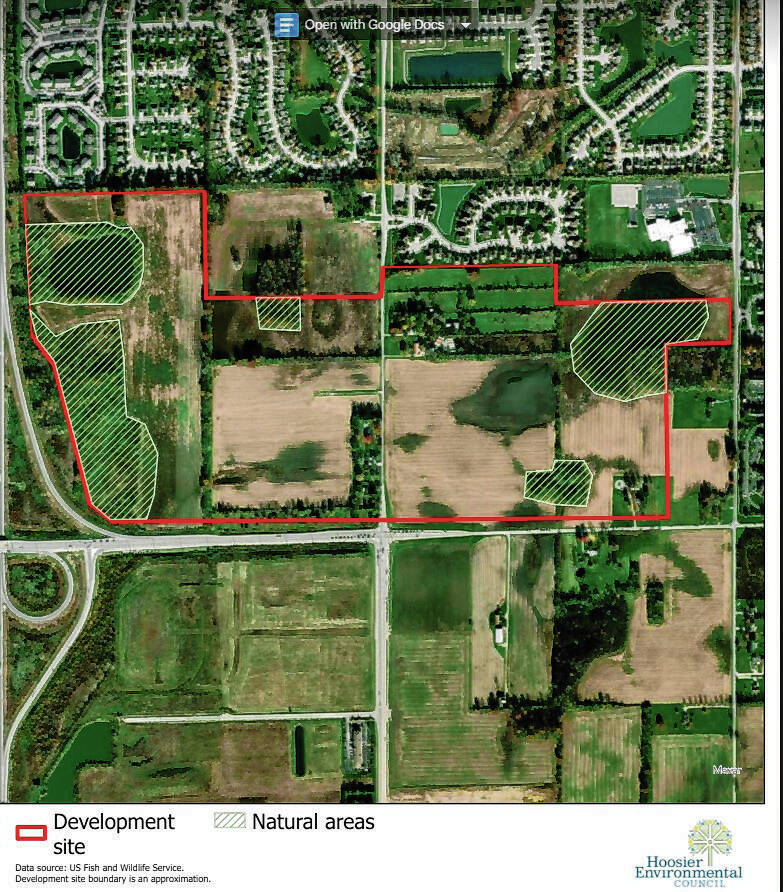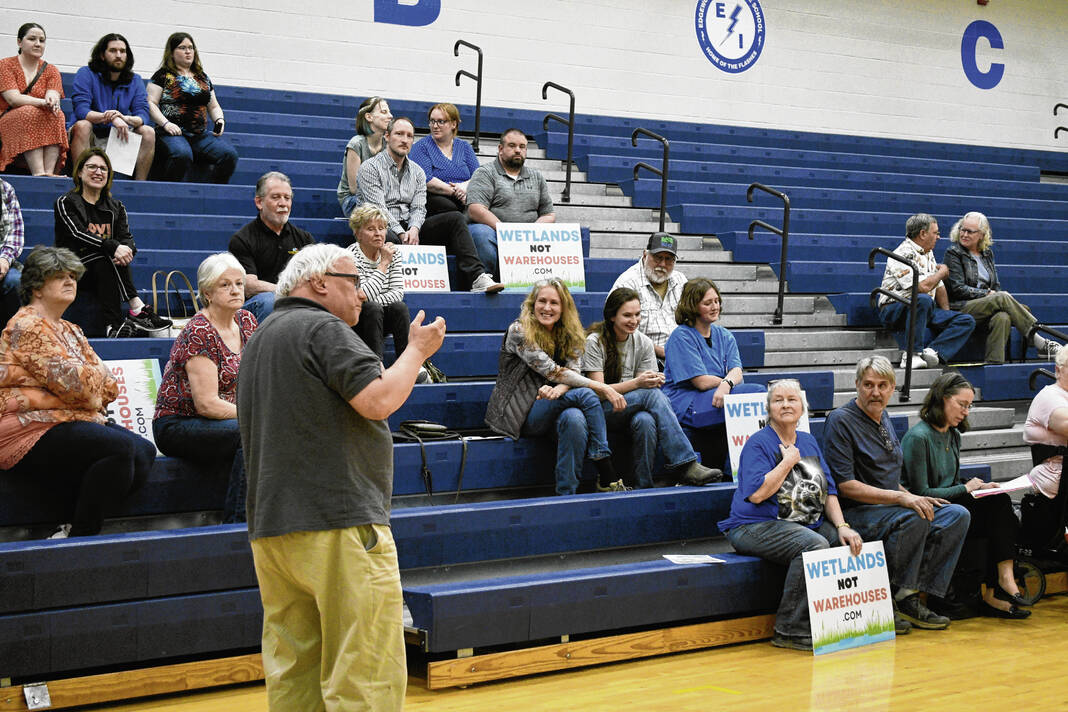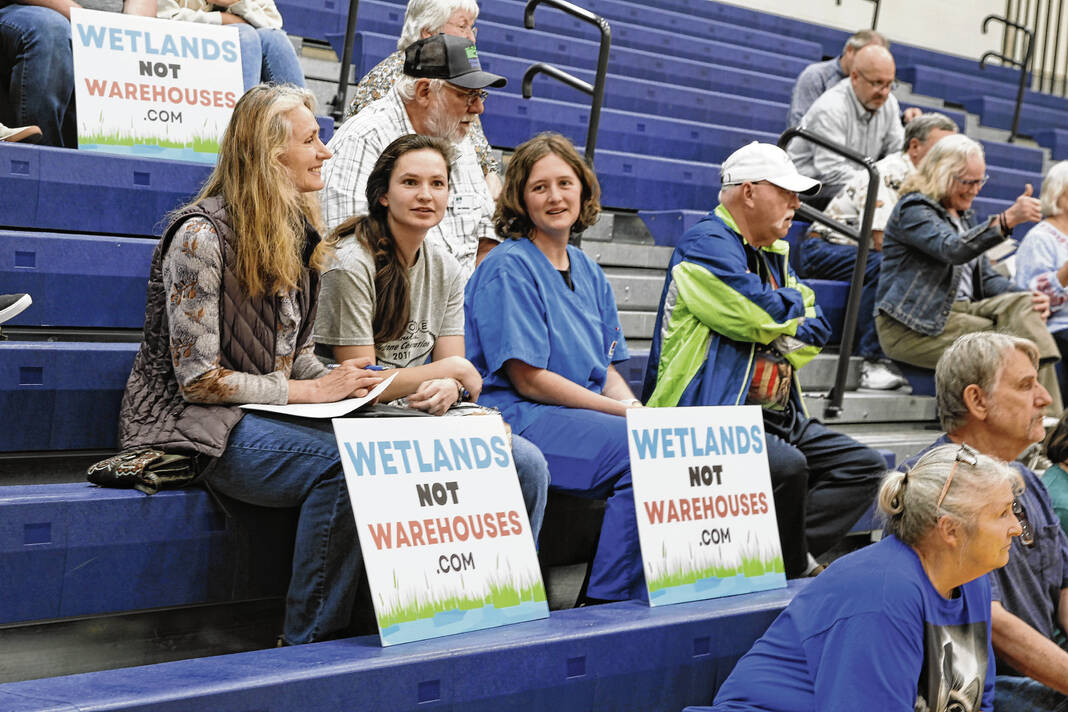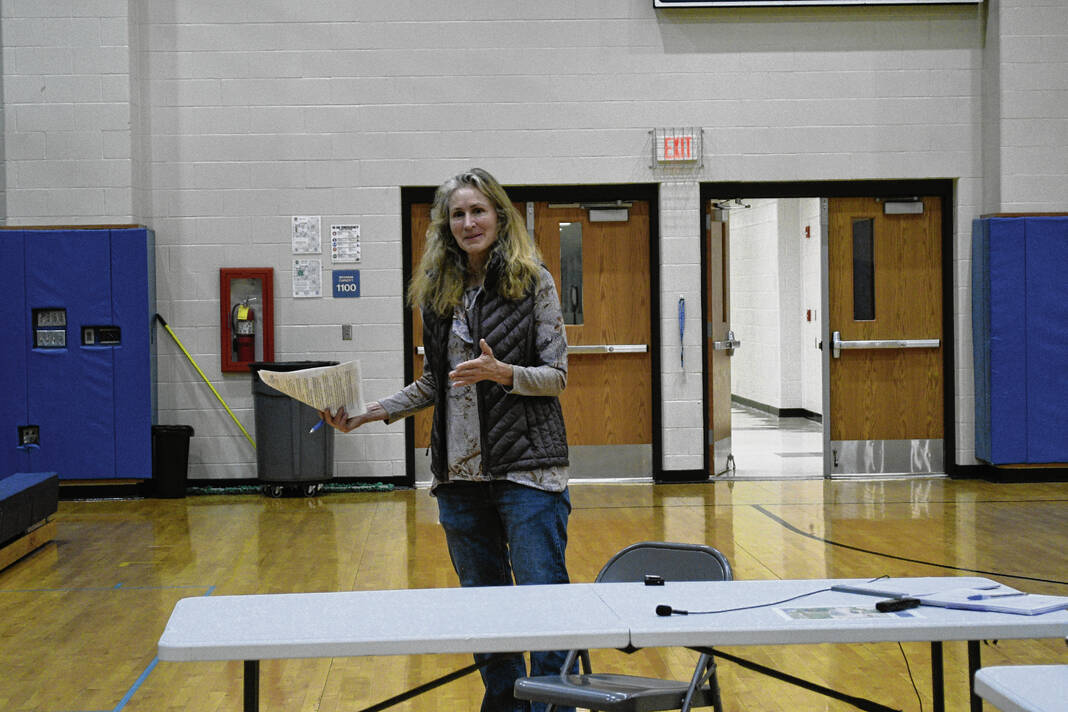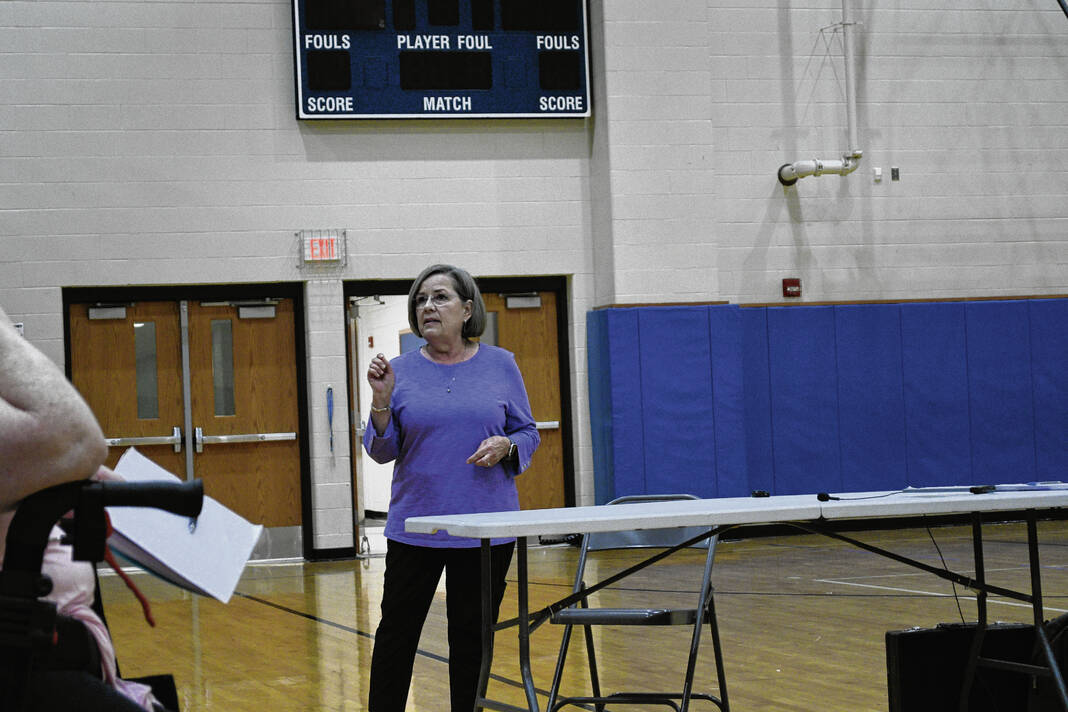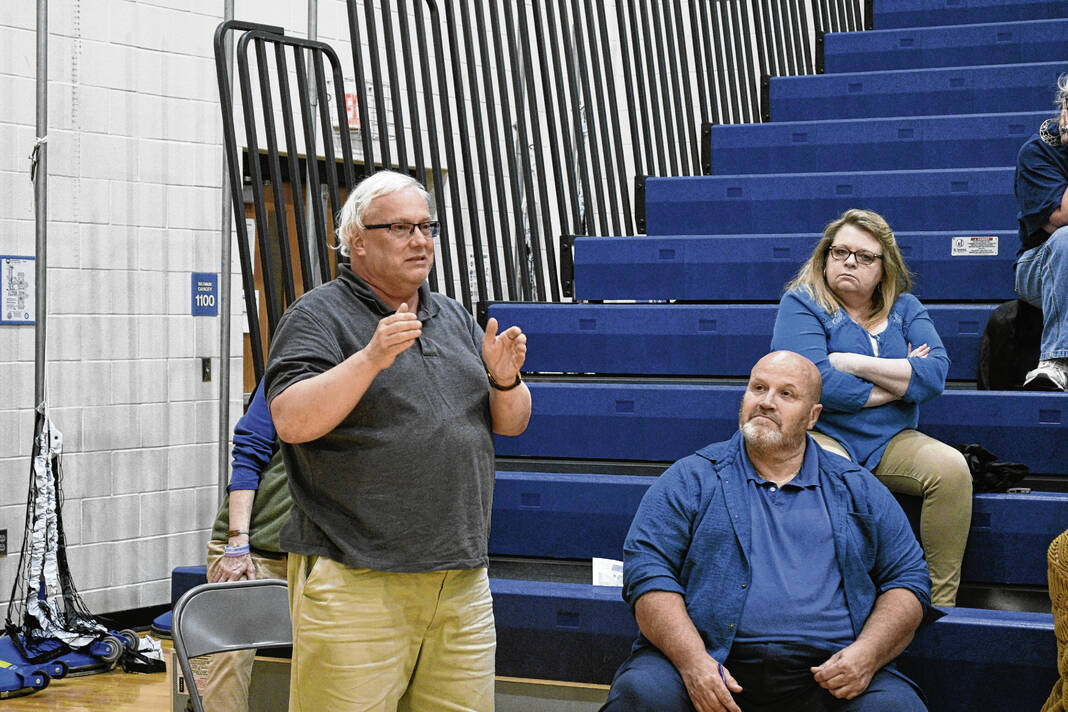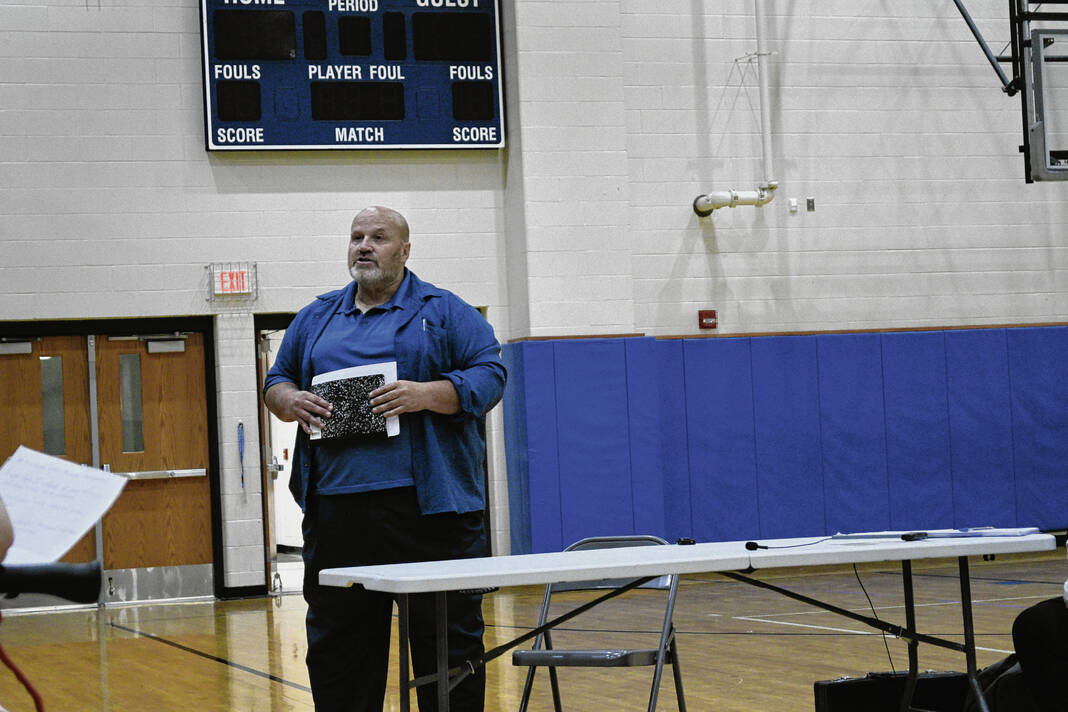
Jayden Kennett | Daily Journal
INDIANAPOLIS — About 50 people came to Edgewood Intermediate School Tuesday night to ask questions and voice concerns about a proposed southside industrial park wetlands permit.
A public hearing was held Tuesday regarding the permit to build a 45-acre industrial park at County Line Road and Arlington Avenue on the southside of Indianapolis. Previously, over 2,300 people signed a letter addressed to the Indiana Department of Environmental Management asking them to deny the permit in early January.
Gershman Partners and Citimark are planning to build a $175 million industrial park to span the northside of County Line Road from Arlington Avenue to Interstate 65. The development is expected to have five industrial buildings totaling about two million square feet, space for restaurants and retail and 5 acres of wetland and park space.
People have expressed concerns the development could increase flooding, impact water quality and destroy wildlife habitats.
Last night, local residents and concerned Hoosiers had the opportunity to share input with IDEM, as the government agency decides whether to approve or deny the permit. About 22 people signed up to speak and most of those spoke out during the two-hour meeting. All but two people asked IDEM to deny the permit.
Many residents expressed concerns about the effect on water quality of the Pleasant Run Creek watershed, which has little remaining acres of wetland, impacts on the local wildlife and concerns that the compensatory mitigation, or ILF credit, will likely not occur in the Pleasant Run Creek watershed.
The Hoosier Environmental Council estimates about 10 to 15 million gallons of water will have nowhere to go if the permit is approved, said Indra Frank, HEC’s director of environmental health and water policy. Residents asked where the water stored in these wetlands would go if they were destroyed.
Many said they would like to see the wetlands on the property protected and other alternatives explored. Residents expressed concerns with the development’s mitigation plans, saying it’s not enough to make up for the damage of destroying wetlands on the property. If wetlands are destroyed, residents want to see a mitigation plan within the Pleasant Run Creek watershed.
Currently, the wetlands could be mitigated anywhere along the upper White River Watershed, an area that spans from Randolph County down to Morgan County.
Southside resident Robin Heldman, who lives near protected wetlands where the development is planned, is worried that her quality of life will diminish as the wetlands disappear around her home. Specifically, Heldman is concerned about the impact the development may have on Class III wetlands, the only wetlands that receive full protection under state law. About 0.25 acres of wetlands on the property are considered Class III wetlands. Heldman has witnessed a “drastic change” in the area from a rural community to growing housing and commercial developments, she said.
Wetlands help the area’s ecosystem as wildlife uses the area for habitat and migratory birds use the area to rest, she said.
“We have also witnessed nesting sites for Grey Horned Owl and Red-tail Hawks. We observe regularly deer, foxes, coyotes, opossums, raccoons, an abundance of songbirds, woodpeckers and bats, all of which have been squeezed out of their natural habitat in the name of progress and development,” Heldman said.
Drainage is an ongoing issue in the area as well, she said. Heldman understands that development around her once rural property is inevitable, but she wants to see “creative” development that enhances natural resources, she said.
She hopes an environmentally conscious development standard is created with this development, she said.
Some people had creative ways to share their concerns with IDEM through satirical speeches and rhetorical questions.
Michelle Cox, who lives near the development, told IDEM officials about a mallard pair of birds that she sees in the spring from her backyard. She was concerned about the plight of those birds if the wetlands disappear.
“Can you just come over and kill them now because you’re leaving them with no home?” Cox said rhetorically.
She asked that property owners be protected with a contract to mitigate flooding and cover flood insurance costs if the permit is approved.
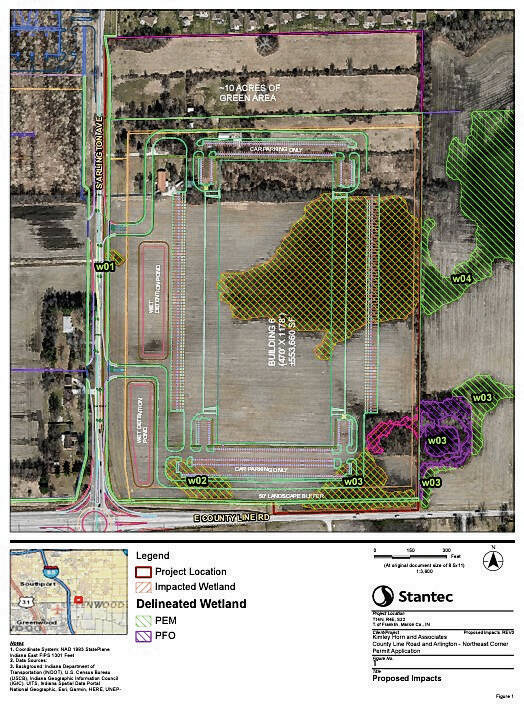
Nearby farmer Mark A. Meyers and his family has been farming the area directly next to the development for decades, he said. His last successful crop was in 2012. Meyers said the 2008 flood and the poor drainage system contributed to the demise of the farm fields and the area that is now a wetland. He supports the development and hopes draining the wetland will positively affect the entire area.
“To me, there is no benefit to area residents, to the church or any businesses to come by having a so-called wetland in the middle of suburbia,” Meyers said.
Frank noted that before European settlement, Indiana was 24% wetlands and in many cases when drainage fails, it is wetlands reverting to its natural state.
Wetlands within Central Indiana’s ecosystem are complex and important, said Kayla Swoveland, an environmental scientist. They provide vital habitats and serve as “front-line defenders against the challenges of climate change,” she said.
A 2018 Indiana Climate Change assessment projects an increase in average precipitation and higher temperatures by mid-century.
“With these projections and increased precipitation and more frequent droughts looming, the significance of wetlands becomes even more pronounced,” Swoveland said.
Frank raised several issues with the development including alternatives to avoid adverse impact on wetlands, the impact on water quality and concerns that the proposed mitigation will not offset the impact of water quality. Frank suggested less parking lot space to preserve a .25 acre of protected wetlands. Frank also raised concerns that there could be additional areas of the development that have hydric soil, an indicator of the presence of wetlands.
There is potential for conservation development around the wetlands that would protect the natural assets.
Gershman Partners officials have had conversations with HEC and nearby residents about reducing the number of impacted wetlands. Those conversations have already resulted in fewer acres of impacted wetlands and the addition of wildlife viewing amenities in the plans, Ryan Gershman, principal at Gershman Partners said in January.
“This development includes the preservation of significant wetland areas and will provide wildlife viewing amenities to area residents, which is the direct result of our engagement across multiple neighborhood meetings and public hearings over the last year,” the developer said in a statement. “The project also includes significant onsite and offsite infrastructure investment and stormwater upgrades. We are proud that this project will produce hundreds of high-quality jobs for Indianapolis residents with a thoughtful site plan that is in full compliance with local, state and federal requirements.”
People who were unable to attend the hearing may still submit written comments to IDEM before April 14. To comment, email Graham Wrin at [email protected] or call 317-605-4105. Comments should reference the permit application identification number #IWIP 2023-1011-49-GCW-A-2.
IDEM has until May 28 to either approve or deny the permit.


